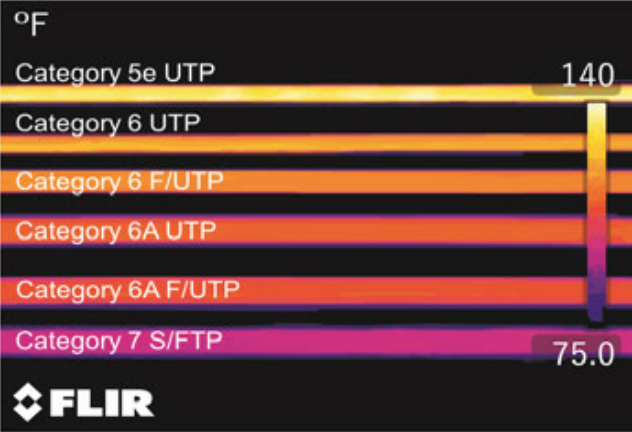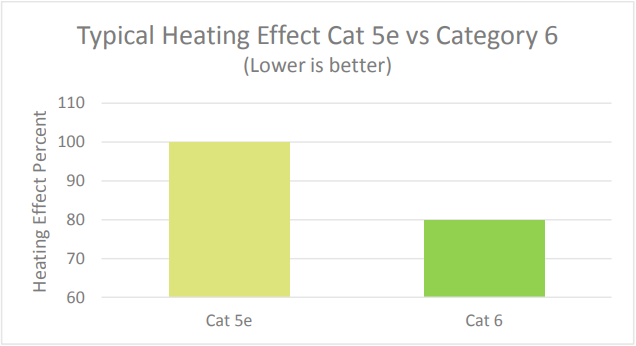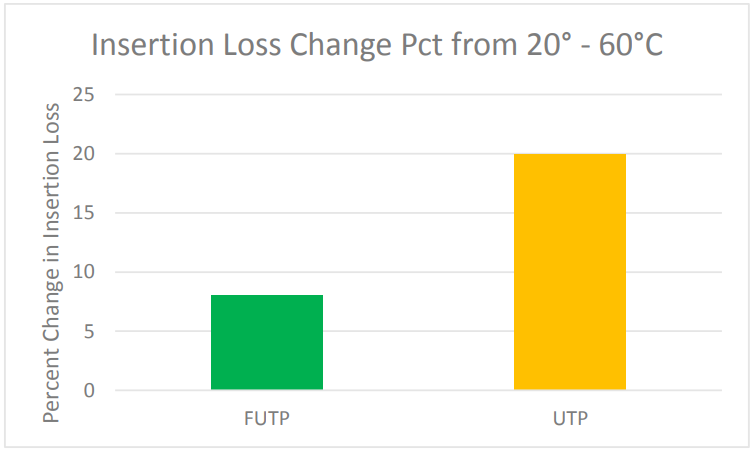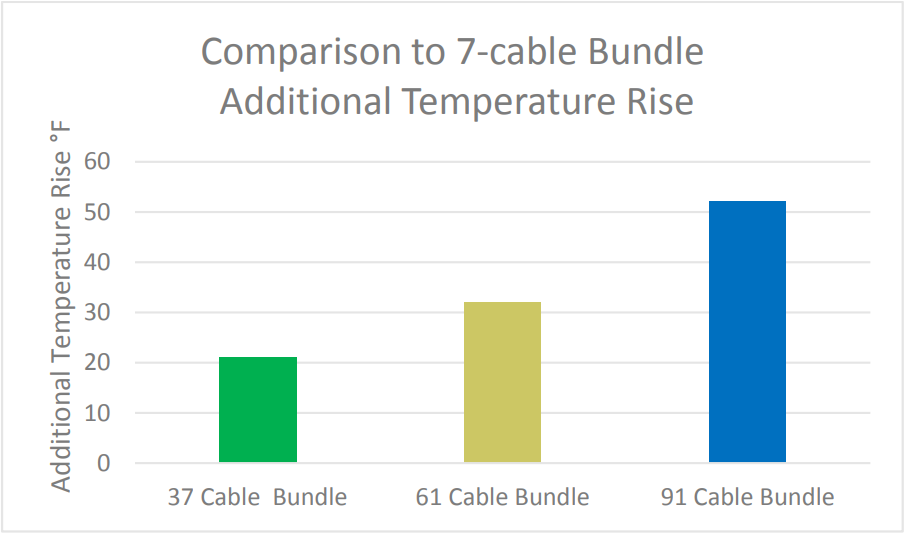PoE - Cabling
Cabling
Cabling is important because it directly impacts energy efficiency and heat generation.
When picking cabling for your PoE system, it is important to make sure you consider four parameters:
Conductor gauge size
Cable construction
Cable temperature rating
Installation type
Example of temperature difference of various ethernet cable constructions
Conductor Gauge Size
You may be familiar with Cat 5, Cat 5e, and Cat 6 ethernet cables. These categories are important for PoE heat generation just as they are for data transfer speeds. Cat 6 has a higher conductor gauge than Cat 5e which means a lower resistance, and therefore, less heat generation. Compared to Cat 5e, Cat 6 has about 80% of the heat generation.
Cable Construction
When it comes to cabling, there are different levels of shielding and foil. Generally, shielding and foil are known to mitigate electromagnetic interference and crosstalk. For PoE, F/UTP (Foiled w/Unshielded Twisted Pairs) has been shown to be 40% more effective at heat dissipation than UTP (Unshielded Twisted Pairs).
Cable Temperature Rating
Cables have different ratings for ambient temperature that can affect power dissipation as well. Typical cable ambient temperature ratings are 60 °C, 75 °C and 90 °C. There are also special ratings such as 200 °C.
Shielded cables have better performance against temperature affects as shown below.
Installation Type
Lastly, the way the cables are installed can affect the temperature rise. The larger the bundle of cables, the larger the temperature rise. Below is a chart to show the affect of bundle size.
For more information, check out the testing that Hitachi performed in their lab.





